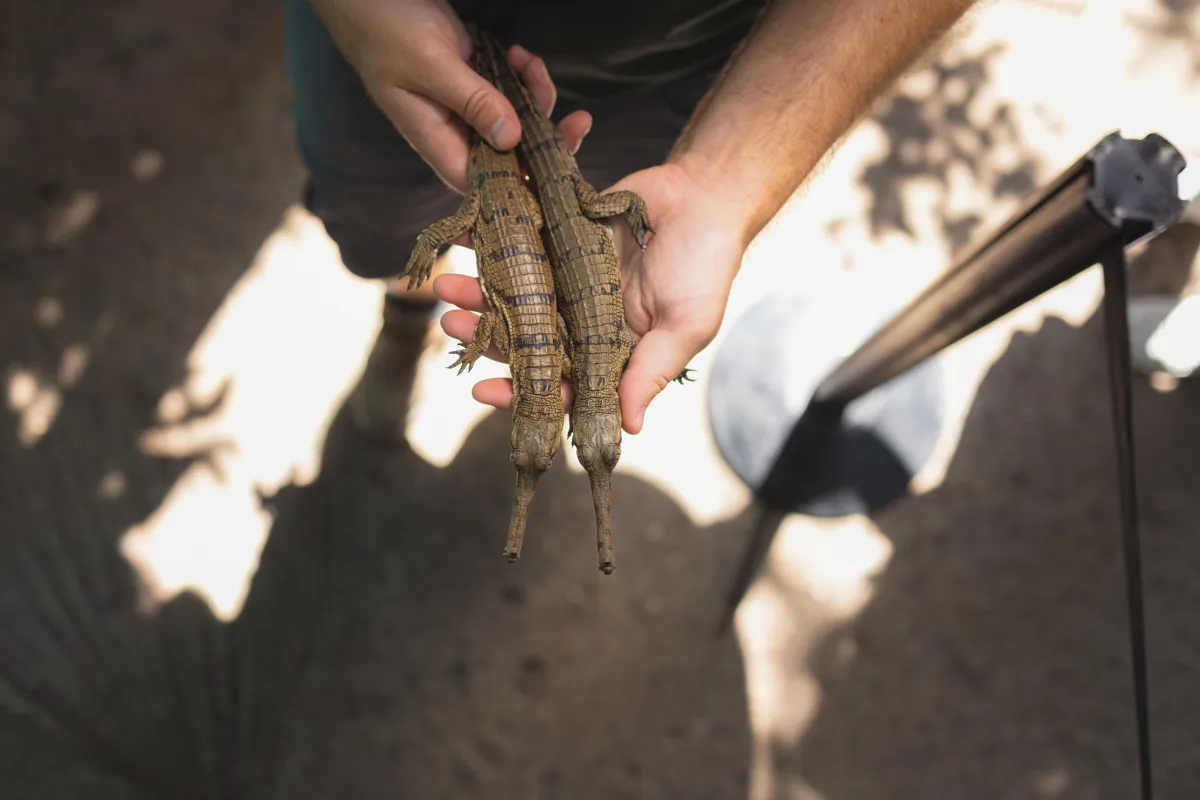
It’s a three-peat! Fort Worth Zoo hatches critically endangered gharial crocodiles for three consecutive years
This is a massive conservation achievement with first-ever back-to-back-to-back hatchlings in North America
FORT WORTH, Texas – Once again, the Fort Worth Zoo is celebrating a historic moment of conservation success with the third annual hatchings of the gharial crocodile. With two new gharial hatchlings this summer, the Zoo remains the only institution in North America to have produced multiple offspring of this species and is the only North American institution to have repeated this process for multiple, consecutive years.
Gharials are listed as critically endangered by the International Union for the Conservation of Nature (IUCN), which adds to the significance of this conservation success. These offspring were hatched from eggs laid by one female within the Zoo’s gharial group whose genes are not yet represented among hatchlings, which goes a long way in diversifying the gene pool of gharials in managed care.
“To have continued success for a third year in a row means that in addition to having more of these beautiful and imperiled crocodiles for the future of the species, we are able to further refine our breeding, incubation, and hatchling husbandry techniques as each year informs us more and more,” said Vicky Poole, associate curator of ectotherms at the Fort Worth Zoo.
The gharial is one of the largest crocodilian species, known for its long and thin snout, which makes it particularly skilled at hunting and eating fish. The gharial is a great swimmer and spends most of its life in a cool underwater environment. While the hatchlings are just over 12 inches now, they will quickly grow, and their snouts will continue to elongate. Male gharials can grow to 16 feet and weigh nearly 1,500 pounds, while female gharials stay slightly smaller. The gharial crocodile is critically endangered for a variety of reasons including habitat destruction, pollution and river fragmentation, making it challenging for gharials to survive in their native habitats.
The gharials hatched on June 5 and on June 11. The back-to-back-to-back sets of gharial hatchlings are the product of nearly 15 years of dedicated effort to successfully reproduce this species, grow the population and diversify the gene pool.
The Zoo’s gharial habitat, located in the Museum of Living Art, was specifically designed in 2010 to promote conservation and breeding success. These breeding-focused features include regulation of water temperature, gently sloped waterfront to provide easy access to both wet and dry areas with their short legs and heat coils in the sand to ensure the sand stays hot enough for the females to lay eggs.
For now, the hatchlings will remain behind the scenes at the Zoo for close monitoring of their growth and development, along with the 2023 and 2024 hatchlings. The Zoo hopes to create a safe and secure gharial hatchling habitat so that guests can eventually observe the tiny crocs on a visit to the Zoo, but this is still in the concepting and planning phase.
The nationally acclaimed Fort Worth Zoo has been voted a top zoo in North America by USA Today, one of the “World’s Greatest” by BloombergTV, the Best Zoo in Texas by Yahoo Travel, the No. 5 zoo in the nation by USA Travel Guide, the No. 1 family attraction in the DFW Metroplex by Zagat survey and a Top 10 Zoo or Aquarium by FamilyFun magazine. Home to nearly 7,000 animals, the Zoo is beginning its final installment of a four-phase master plan. The first phase, African Savanna, opened in 2018; the second phase, Elephant Springs, opened in 2021; the third, Predators of Asia & Africa, opened in June 2023. The fourth and final phase, Forests & Jungles of the World, is next. The institution’s focus on education and conservation is second to none, enhancing the lives of more than 1 million visitors a year and the animals that live there.